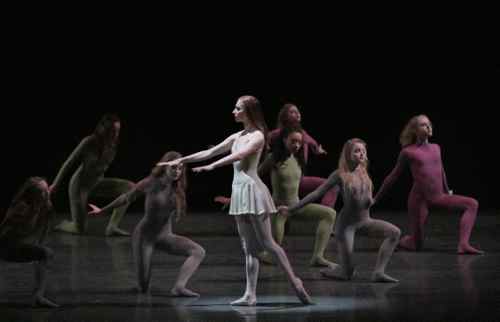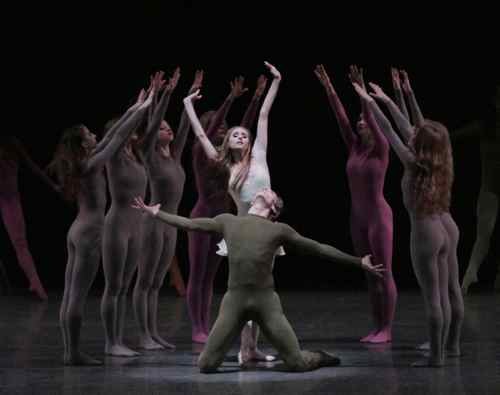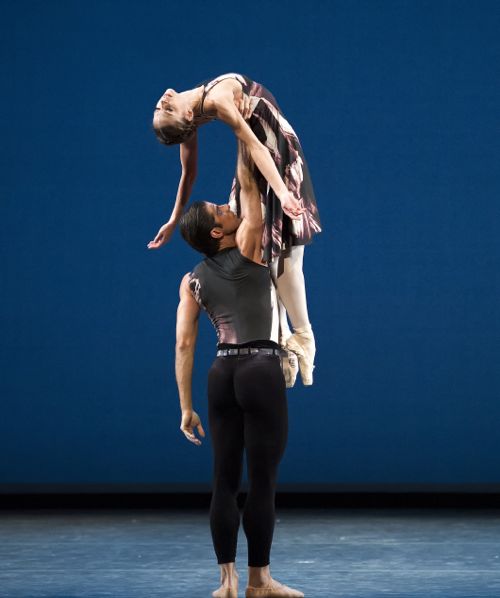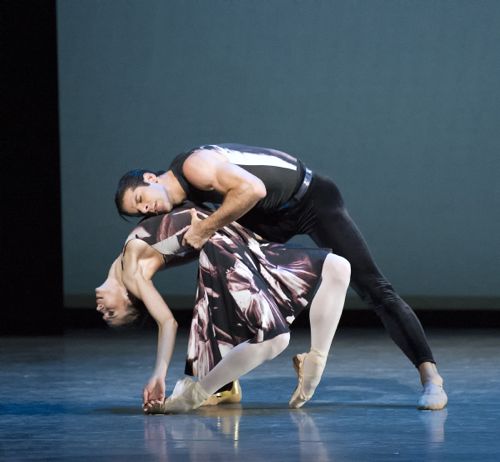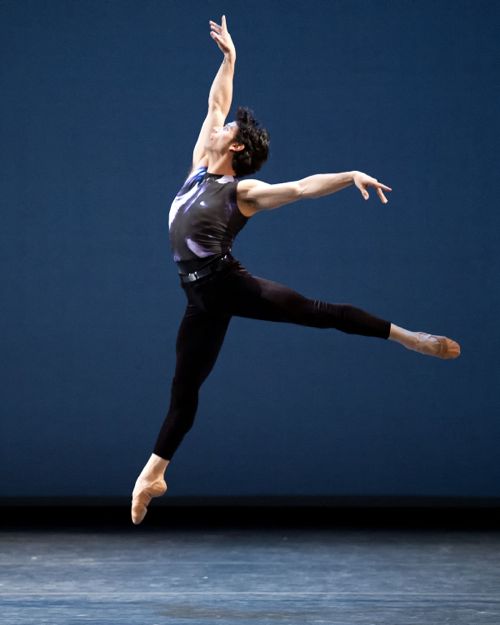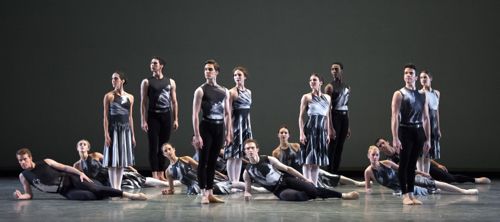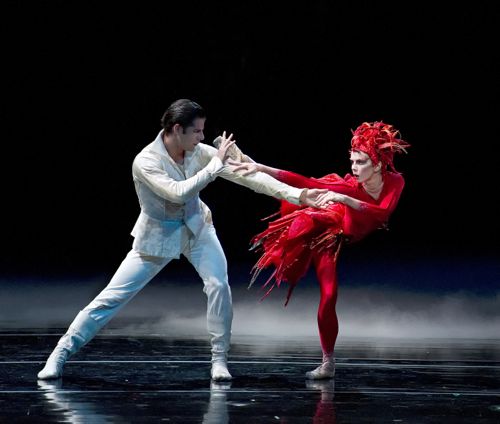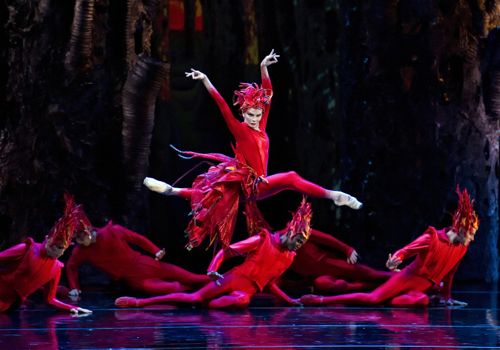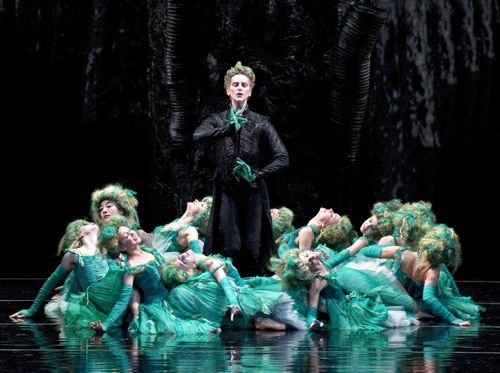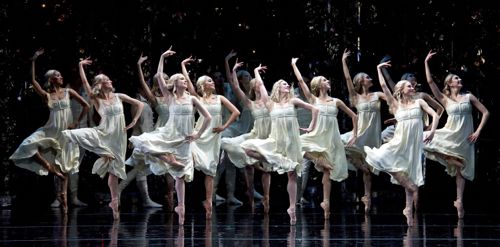“I don’t have to tell you that Mr. B is with Mozart and Tschaikovsky and Stravinsky,” Lincoln Kirstein announced to the New York City Ballet audience, exactly 30 years before the company’s April 30 opening night this season. The program, which inaugurated City Ballet’s three-week American Music Festival attracted a good house and fervid audience enthusiasm for two big pieces easy on both eye and spirit: Who Cares? to Gershwin songs (their lyrics unsung, but engraved in popular memory; Tiler Peck at her familiar finest) and Stars and Stripes (Hershy Kay, after Sousa, the master of marching), plus one tiny one—the amuse-bouche Tarantella.
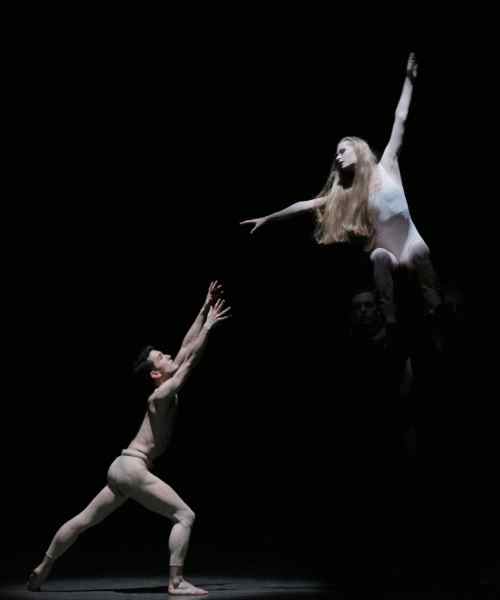 Janie Taylor and Anthony Huxley in George Balanchine’s Ivesiana
Janie Taylor and Anthony Huxley in George Balanchine’s Ivesiana
Photo: Paul Kolnik
The piece awarded only a tepid reception was the one I went to see—the 1954 Ivesiana, named for its composer, Charles Ives. It seizes the imagination and always in different ways; its message is up to the interpretation of the viewer. The message, however, is never heartening.
The piece opens and closes with a largish group in unremarkable practice clothes of dull hues, people locomoting on their knees, the rest of their body erect but subdued, their destination undefined and unexplained—perhaps a useful image for sociologists. Human assets such as will and imagination—even intention—seem to have died in them long ago. They are, of course, incapable of mourning what they’ve lost. They’re indifferent, emotionally hollow.
Balanchine’s first stroke is right on the mark: the curtain rises on a full blackout. Then, slowly, a little light comes up; witnessing this is like the beginning of arousal from deep anesthesia. Viewers see a knotty cluster of people on their knees that slowly fans out as if merely to create a breathing space. Still the claim of that larger space registers as a warning and a threat.
Ashley Laracey and members of the ensemble in Ivesiana
Photo: Paul Kolnik
A young woman in a white tunic, hair unbound (Ashley Laracey), wanders through the still-dense forest of kneeling bodies. Her hands palpate the air directly before her, as if she were not simply lost but blind as well. Worse yet, she’s joined by a man in a grey unitard—anonymity personified–and together they make their way through the crowd. So far the narrative might have been coveted by some contemporary equivalent of the Brothers Grimm.
Ashley Laracey, Zachary Catazaro, and members of the ensemble in Ivesiana
Photo: Paul Kolnik
Throughout, the stage remains ominously dark. The girl appears to be running away from the man. Inevitably, he captures her and then leaves her inert body with a group of the anonymous people, as if for dead. The nameless crowd clusters behind the body—fulfilling its mission, as it were—and disappears into the velvety, fatal dark as, presumably maimed and sightless, the girl is once again let loose and tries to find her way. The section described above is called “Central Park in the Dark” and, having lived half a block away from the site, I can attest to the fact that the narrative has many factual roots.
The second section, “The Unanswered Question,” originally featured the incomparable Allegra Kent whose extreme plasticity, coupled with a supercharged poetic imagination, made her role unforgettable. Now Janie Taylor, partnered by Anthony Huxley, takes the leading role, but creatures like Kent are never replaceable. Four men in black (they’re hardly visible) manipulate the woman so that her partner can almost reach out and touch her but never does, clearly never will; she remains forever just beyond his reach. The supporters hold her aloft, erect, like a revered icon, and then, in a thrilling, danger-laden single swoop, she drops backwards. In a few seconds her supporters have her standing in the air once again.
A third section, called “In the Inn,” finds a man and woman (the dangerously good-looking Amar Ramasar, who overacts, and the lush Sara Mearns) enjoying the simple pleasure of a mix of social dances. In the viewer’s imagination, however, the horrors implied in what went before the joy make the halcyon images seems ironic or at least unworthy of trust.
The closing section, “In the Night,” gives us the full cast once again, walking unremittingly on its knees in the near dark to one side or the other of the stage, some exiting into the wings, some still “caught” mid-stage as the curtain falls. Unlike Who Cares? and Stars and Stripes, Ivesiana makes no effort to “entertain” its audience; it is there to make us recall our worst nightmares (asleep or awake) and to marvel at the fact that the most profound ideas and feelings can be expressed (often best expressed) without a single word.
The entire program was extraordinarily well danced.
© 2013 Tobi Tobias




